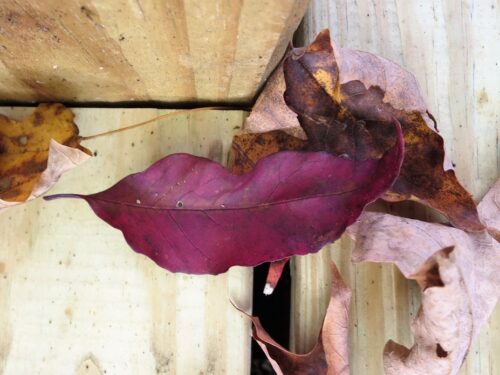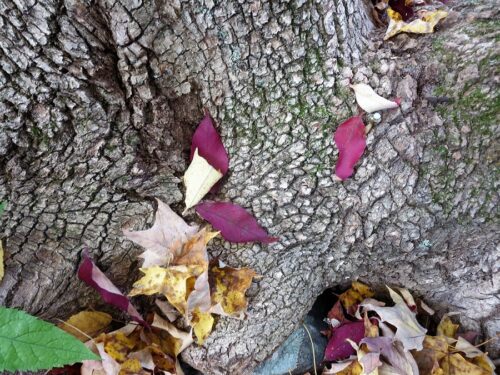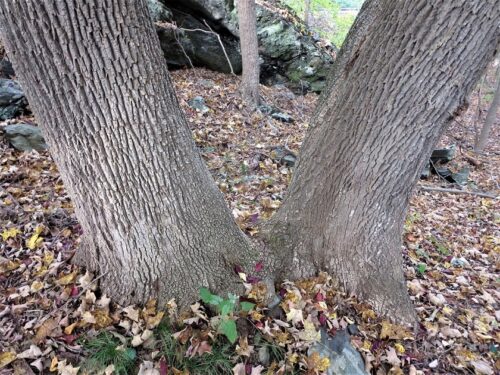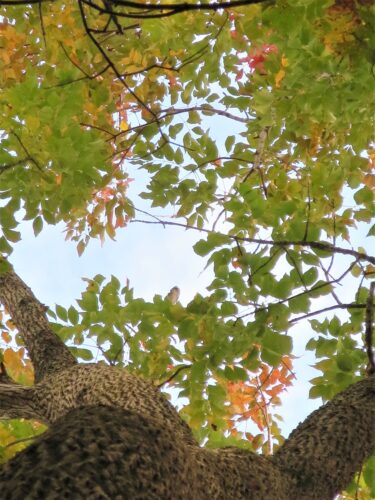
One day in October I was standing on our Bridge to Nowhere when I noticed some beautiful purplish-red leaves on the ground. I wasn’t sure what type of tree they had come from. Obviously it was not maple, oak, or birch.




It wasn’t hard to figure out what kind of tree this was. The pattern on the bark and the leaf shape pointed to ash, and the fall leaf color suggested white ash specifically. The identity of this tree actually cleared up a mystery from earlier in the year. I’d found some interesting seeds on the ground. They were somewhat like maple seeds, but single rather than in pairs. They were, I now know, ash seeds. Ash seeds are called samaras (not to be confused with samsara or samosas, though those are both interesting, too).
Once I knew how to identify the ash tree, I found another one. So now I know that we have at least two on our property, but probably not many more. The majority of trees here are the more common maples, oaks, and pines. According to the Rhode Island Department of Environmental Management, ash trees make up only one-to-two percent of the state’s trees.
That’s a good thing, I suppose. Ash trees have a terrible and unstoppable enemy: the emerald ash borer. I recommend not thinking or reading too much about that. Avoid all Wikipedia articles on the subject of ashes. Take a walk in the woods instead. Enjoy the trees that are growing outside right now. They are all beautiful, each in its own way.

Pingback: Bugs and Worms | Blue-Footed Musings